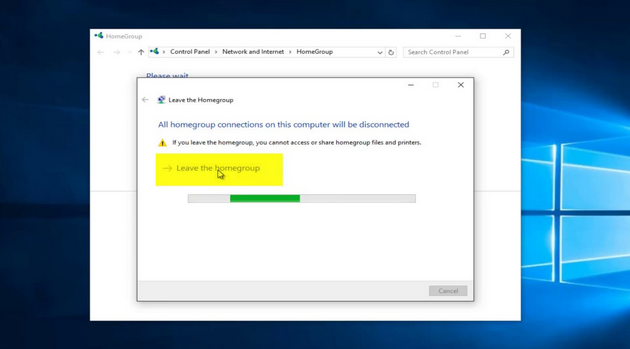Last Updated on January 31, 2020 by Mathew Diekhake
The Homegroup feature available in all editions of Windows 10, designed to give users better networking capabilities, is now being retired according to Microsoft.
The ability to use a Homegroup has been around since Windows 7 and was featured in all updates since then as well, including Windows 8, Windows 8.1, and the more recent Windows 10. Though offering plenty of value to the average user, there was little evidence of Homegroups being anything but seldom used, and that might have something to do with the decision by Microsoft to hang up the cleats and look in other directions.

A Homegroup in Windows 10 allowed for users to share pictures, music, documents, videos, and printers with other computers situated on the same local network—something beneficial to those who understand what that actually means, but rarely used outside of Microsoft enthusiasts. The inability to get family members who use Mac or Linux computers connected to the same network sharing ideas that Homegroups offer probably didn’t help either.
It wasn’t clear precisely the numbers of people who were using Homegroups; only Microsoft has those details and never shared them with anyone outside of the Redmond campus, but here’s what they had to say about the decision:
Easily connecting to and sharing the important pieces of your digital life with those who matter most has never been easier with today’s Modern PCs and the cloud. Whether it’s connecting PCs and printers on your home network via the Share functionality in Windows or using OneDrive to share a photo album of your last vacation, Windows 10 makes connecting multiple devices and sharing content streamlined and simple. And it’s because of that evolution that with today’s build you’ll start to see us retire the HomeGroup service.
The next major software update due out sometime during March of next year—the 1803 software update, codenamed Redstone 4—will be the last time you’ll find the chance to see Homegroups in a version of the Windows 10 operating system. Up until then, you can still see it there, but as of build number 17063, the service is no longer operational.
If you were someone who found Homegroups practical and will miss what they brought to the table, you could check out some alternatives that Microsoft has suggested in its place. For one, you have a couple of good file storage solutions that can help: the OneDrive cloud storage service that’s owned by Microsoft, and the OneDrive Files On-Demand service that takes cloud storage to a whole other level. There’s also what Windows 10 calls “Shared Functionality” available from the operating system which can be used in place of cloud storage for connecting to available devices on the same network to get access to files and folders that way instead. On the other hand, if you’re currently connected to a Homegroup and would like to leave it, you can check out how to leave a Homegroup in Windows 10 and set yourself free.
You might also be interested in:
- Windows Hello Can Be ByPassed with Photos in Older Versions of Windows 10
- How to Connect Windows 10 PC to WiFi Network Without Entering Password
- How to Run Windows Memory Diagnostics Tool in Windows 10
- Bypass Paywalls with Anti-Paywall for Chrome and Firefox
You can subscribe to our RSS, follow us on Twitter or like our Facebook page to keep on consuming more tech.
